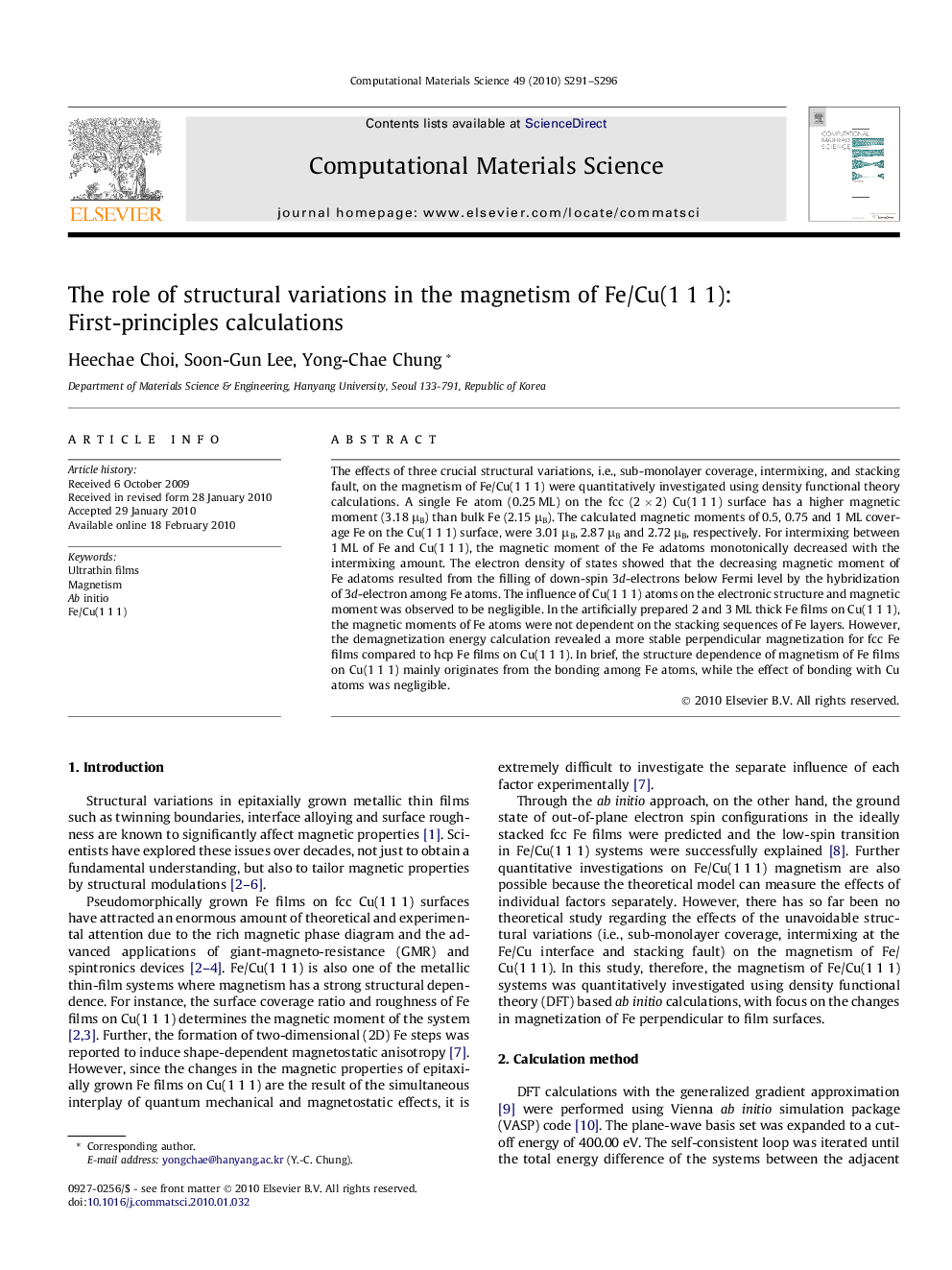| Article ID | Journal | Published Year | Pages | File Type |
|---|---|---|---|---|
| 1562556 | Computational Materials Science | 2010 | 6 Pages |
Abstract
The effects of three crucial structural variations, i.e., sub-monolayer coverage, intermixing, and stacking fault, on the magnetism of Fe/Cu(1 1 1) were quantitatively investigated using density functional theory calculations. A single Fe atom (0.25 ML) on the fcc (2 Ã 2) Cu(1 1 1) surface has a higher magnetic moment (3.18 μB) than bulk Fe (2.15 μB). The calculated magnetic moments of 0.5, 0.75 and 1 ML coverage Fe on the Cu(1 1 1) surface, were 3.01 μB, 2.87 μB and 2.72 μB, respectively. For intermixing between 1 ML of Fe and Cu(1 1 1), the magnetic moment of the Fe adatoms monotonically decreased with the intermixing amount. The electron density of states showed that the decreasing magnetic moment of Fe adatoms resulted from the filling of down-spin 3d-electrons below Fermi level by the hybridization of 3d-electron among Fe atoms. The influence of Cu(1 1 1) atoms on the electronic structure and magnetic moment was observed to be negligible. In the artificially prepared 2 and 3 ML thick Fe films on Cu(1 1 1), the magnetic moments of Fe atoms were not dependent on the stacking sequences of Fe layers. However, the demagnetization energy calculation revealed a more stable perpendicular magnetization for fcc Fe films compared to hcp Fe films on Cu(1 1 1). In brief, the structure dependence of magnetism of Fe films on Cu(1 1 1) mainly originates from the bonding among Fe atoms, while the effect of bonding with Cu atoms was negligible.
Keywords
Related Topics
Physical Sciences and Engineering
Engineering
Computational Mechanics
Authors
Heechae Choi, Soon-Gun Lee, Yong-Chae Chung,
